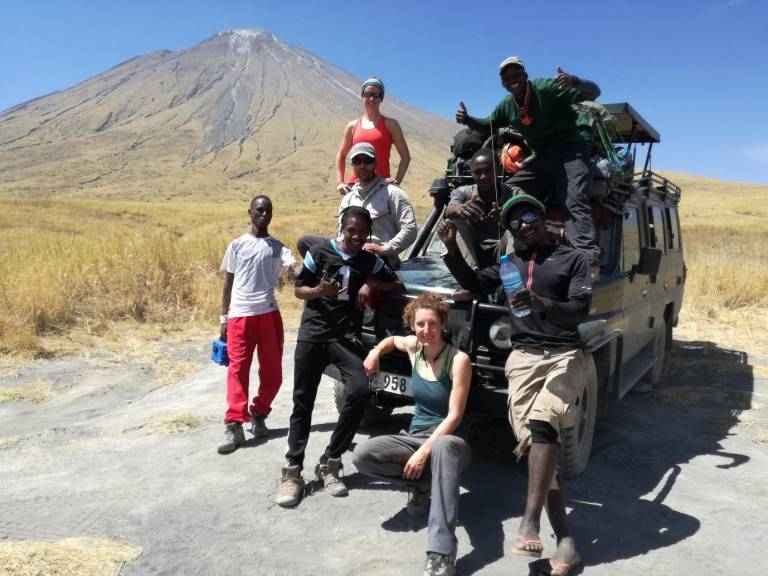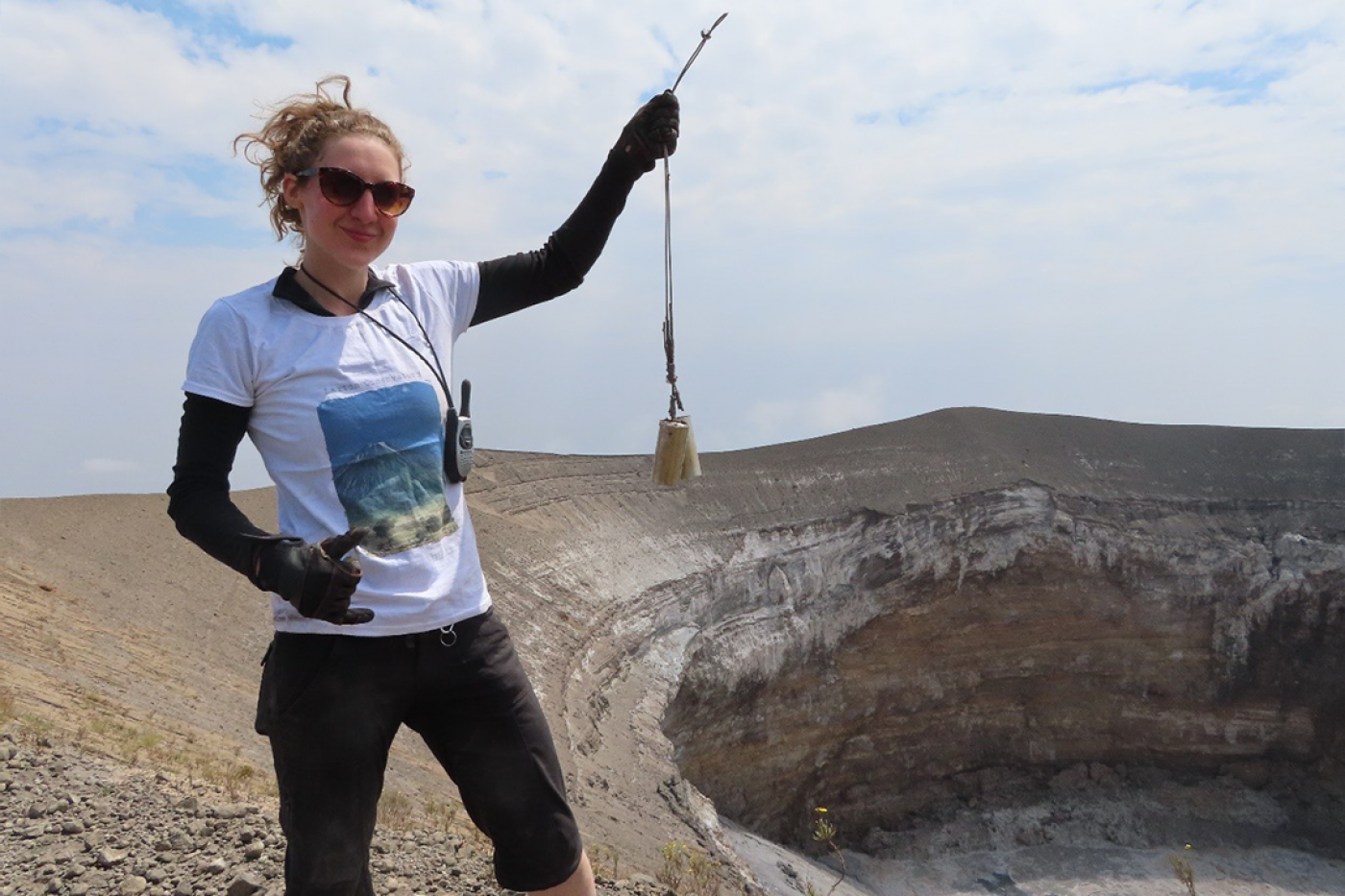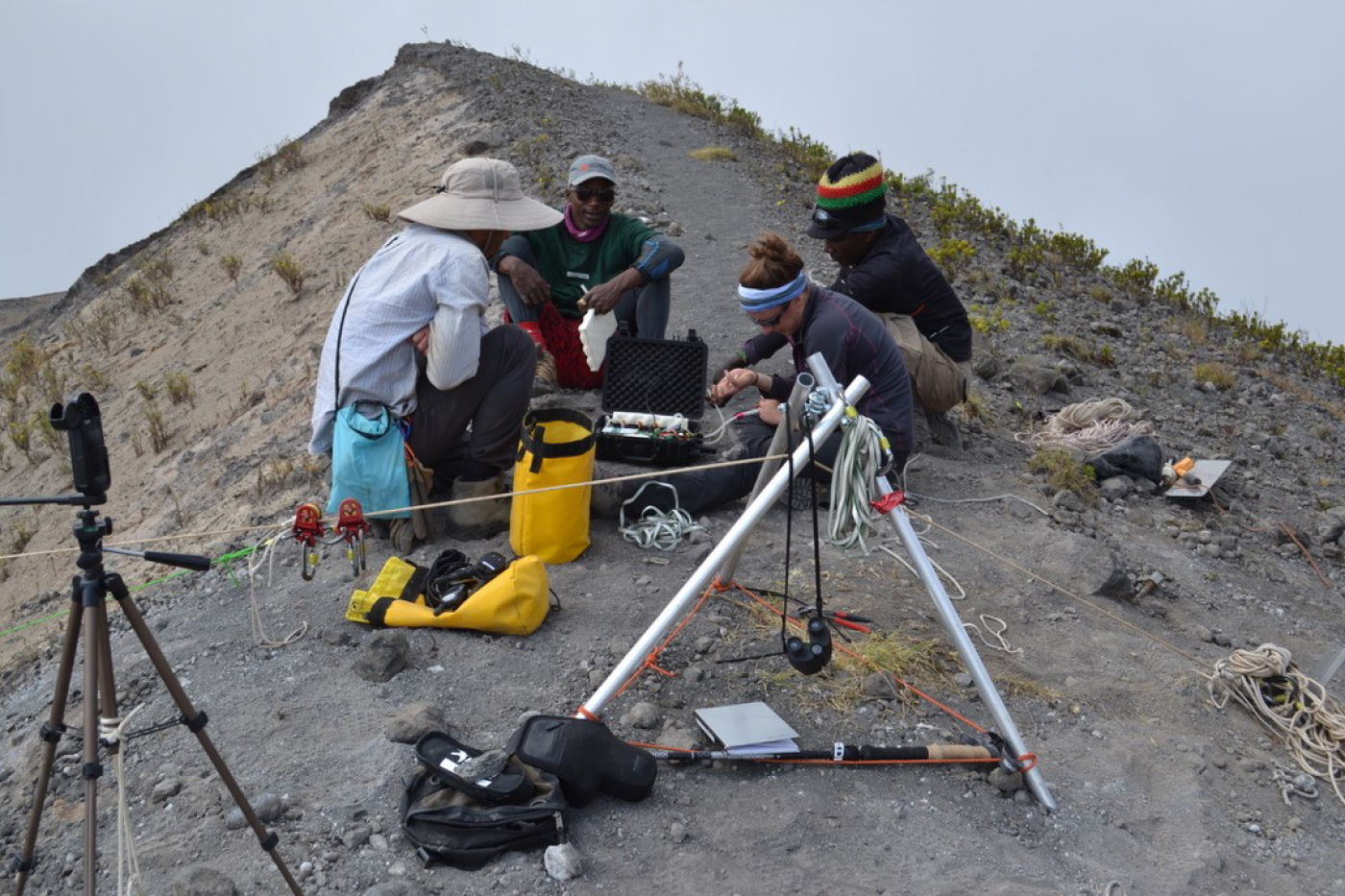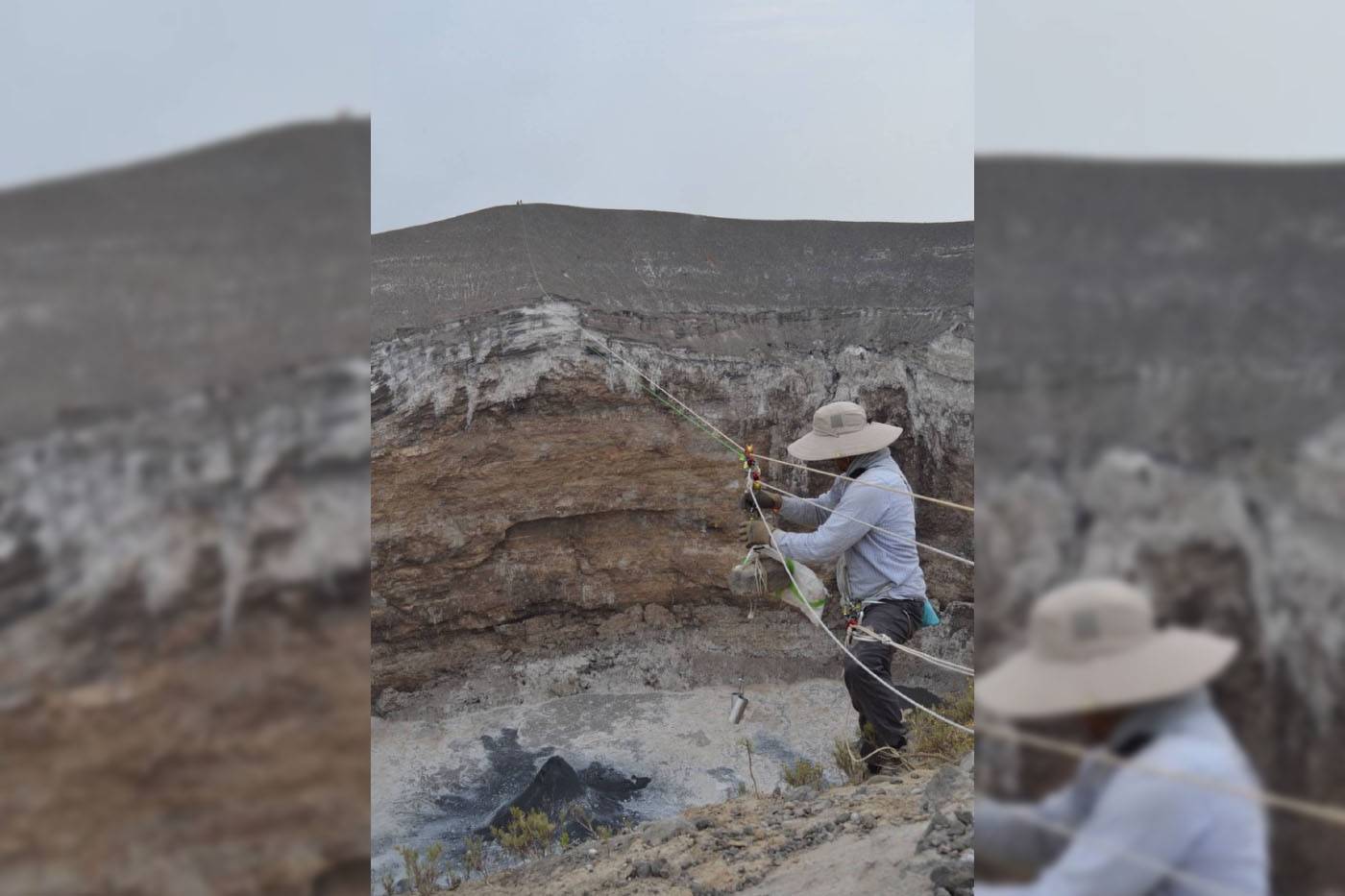Expedition to Ol Doinyo Lengai Volcano, Tanzania.
23 August 2019
Deep Carbon Observatory (DCO) funded expedition to collect the first post-2007 natrocarbonatite lava samples from Ol Doinyo Lengai volcano, Tanzania.

August 23rd 2019 marks 12 years since Chris Weber [1] collected the last sample of rare natrocarbonatite lava from the then accessible crater floor of Ol Doinyo Lengai, the world's strangest volcanic system [2]. Then, on the 4th September 2007, the mountain unexpectedly exploded resulting in a new >100 m deep pit crater, ending all hopes of further collections. Everyone presumably thought that was that...
Thankfully since the end of the explosive phase of 2007-2008, effusive natrocarbonatite activity has resumed [3]. The crater floor is slowly rising and these scientific gems (aka: future research samples) are inching closer to rim path with only 94 m to go. In time, the crater will refill again and so, we wait...And yet, after a brief visit in 2018, UCL's Earth Sciences PhD student Ms. Kate Laxton (assisted by MSc student Mr. Felix Boschetty) concluded that waiting was no fun. Instead with the support of the Geological Survey of Tanzania (GST) and the University of Dar Es Salaam, a plan was hatched to return in July-August 2019 to retrieve samples that are perhaps only a couple of decades premature.
The plan was simple... stretch a rope across the 300 m wide gaping hole at the summit of the volcano and use a system of pulleys* to send stainless steel cocktail shakers into the open lava lake. Then, using the same rig, send a Multi-component Gas Analyser System (MultiGAS) down to the crater floor to measure volcanic emissions over time. A small number of custom-built CO2 sensors would also be suspended independently of the main line, neatly packaged in glittery hamster balls to help them roll down the inner slopes of the crater. All being well, this would provide a baseline for the current level activity at Ol Doinyo Lengai from which scientists could track changes in the future.

Photo of Kate Laxton by Dr. Emma Liu – First twin sample of natrocarbonatite lava

Preparing the MultiGAS for the first crater traverse. Left to right: Arno Van Zyl, Amedeus Mtui, Emma Liu, Ignas Mtui

Photo of Mr. Arno Van Zyl, Vertica Ltd – Lava Sampling
The next steps were to secure funding, which was generously provided by the Deep Carbon Observatory [4], and to find a team of level-headed equally ambitious volcanophiles. Recruitment began with Dr. Emma Liu, drone and gas sensing aficionado from the University of Cambridge, swiftly followed by Mr. Arno Van Zyl, Vertica Ltd rope access technician and all round good guy. Three then became nine once our experienced Kilimanjaro guides and local Maasai joined forces to help us pull this off.
In the end, one year of planning boiled down to eight windy days and nine cold nights at the summit, the successful collection 6 fresh natrocarbonatite samples, 6 MultiGAS traverses, 2 MultiGAS dips, 3 nights of thermal imaging, 3 drone-based DEMs, 8 tephra samples and a whole load of brilliant teamwork.
All this to say that the first natrocarbonatite lava samples collected since before the explosive eruption of 2007-2008 have safely arrived at Department of Earth Sciences for chemical analysis. The point of which will be to determine whether the composition of said lava has returned to its unusually stable composition (analysed throughout the eruptive phase of 1983-2007) or whether the explosive eruption irrevocably altered the internal structure of the volcano. The answer to this will help us get a handle on the eruption dynamics of this weird and wonderful volcano.
The expedition also offered us an opportunity to demonstrate the value of home-made** budget-friendly gas sensors as a monitoring solution for resource poor institutions such as our collaborators, the GST. These sensors, tested in combination with a MultiGAS from the University of Palermo, allowed us to obtain a time-series for the composition of gases currently emitted in the crater, an important tool for understanding the day-to-day activity of any volcanic system. Our hope is to improve upon our original design and to provide the GST (and others) with the equipment necessary to take ownership of their own monitoring aspirations.
*Courtesy of DMM Wales
**Built with Dr. Kieran Wood (University of Bristol Flight Laboratory).
References:
[1] Volcanic Expeditions International (VEI), http://www.v-e-i.de/english/about.html#adr
[2] Keller, J., Klaudius, J., Kervyn, M. et al. Bull Volcanol (2010) 72: 893. https://doi.org/10.1007/s00445-010-0371-x
[3] Global Volcanism Program, 2009. Report on Ol Doinyo Lengai (Tanzania). In: Wunderman, R. (ed.), Bulleting of the Gloval Volcanism Network, 34:2. Smithsonian Institute. https://doi.org/10.5479/si.GVP.BGVN200902-222120.
[4] Deep Carbon Observatory, https://deepcarbon.net/
 Close
Close

